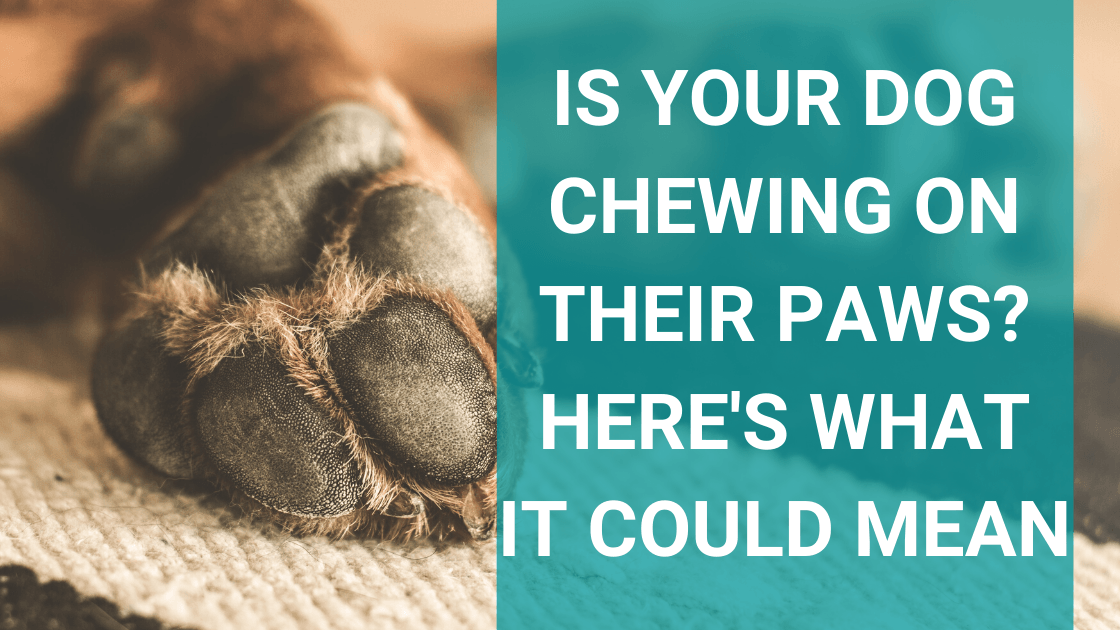Dogs are known for their unconditional love, excitement towards life, and predictable habits. But what about the day you get home from work and Fido doesn’t bound towards the door in a mess of wiggles? Or when you invite your dog on a walk to be met by a sad expression?
When our dogs aren’t feeling well they can’t just come over and tell us (sadly). So knowing how to tell if your dog is sick is an important skill for dog owners. We have to be detectives when it comes to assessing the health of our dogs.
Often, significant behavior changes are our major clues that something might be up with Fido. Additionally, signs of pain, fever, and more overt symptoms can appear.
From nausea due to eating something they shouldn’t have, to more serious internal disease, you need to know how to tell if your dog is sick so that you can get them the help they need. At the end of the day, if you suspect something’s up, make a vet appointment! But in the meantime, here are some tips.
Signs of a healthy dog
Making a daily or weekly note of your dog’s health is something you’re probably doing without realizing it. Basically, noting that nothing is abnormal about your dog’s behavior or body is a way to tell that they’re not sick.
Here are eight basic things that are true of healthy dogs:
- Their coat and skin appear shiny and healthy. There is no excessive itching or flaking. They do not have lacerations, lesions, lumps or bumps on their body
- Their breath is (relatively) fresh smelling
- They are a healthy weight. Their waist contours in when you view them from overhead and you can lightly feel their ribs
- They are eating and drinking normally
- They are having normal bathroom habits
- Their activity level is normal for their breed, size, and age (no significant changes!)
- They move about with ease and do not show signs of stiffness
- They are breathing normally and there is no discharge from their nose
In short, if your dog’s behavior, appetite, coat and disposition don’t have any significant changes, your dog is likely doing just fine.
Related Reading: How to Tell If Your Dog Is Happy
How to tell if your dog is sick?
Just like in humans, as our dogs age their health can decline. Caring for a senior dog is a time when you may be more aware of changes to your dog’s behavior which have you questioning if they are sick.
Young, healthy dogs can also have an isolated illness or injury. This may be associated with seasonal hazards like heat or extreme cold, getting into something they shouldn’t have, or acute onset of something more serious. Let's take a look at eight signs and symptoms you shouldn’t ignore.
Related reading: First Aid For Dogs
1. Coughing, sneezing, and wheezing
Persistent coughing and sneezing, or other respiratory symptoms aren’t really normal for a dog. If you notice this, it’s worth a trip to the vet. Your dog may have contracted kennel cough, which in adult dogs usually clears up on its own, but in some cases can lead to a more serious case of pneumonia. Your vet will be able to monitor the progression for you.
Respiratory discomfort can also be a sign of heart disease, heartworms of lung disease. So it’s best to have your dog evaluated.
2. Loss of appetite or thirst
Changes in appetite are a big red flag for your dog’s health. When dogs aren’t feeling well, they will show little interest in food. As an isolated or short-term event, a dog that’s eating less doesn’t need to be rushed to the vet but should be monitored for other signs and symptoms of illness.
Dogs eat less when they are in pain, having digestive issues or are stressed. If your dog doesn’t eat anything for over 24 hours, experts recommend having them seen.
Not drinking water is a more serious cause for concern. Dehydration can lead to serious complications and should be addressed immediately with your vet. Your dog may not be drinking water due to an illness like diabetes or kidney disease. It may also be that getting up to drink water is painful or exhausting for your older dog, so relocating the water or bringing it to them may be necessary.
3. Increase or decrease in elimination
If your dog is suddenly losing control of their ability to make it outside to use the bathroom or can’t make it through the night without a bathroom break something more serious may be going on.
In addition to this change in frequency, more or less volume of urine, urine with blood in it, a change in urine flow, or visible difficulty passing stools are all things to contact your vet about. Like with most things on this list, isolated incidents may be just that, but a pattern in behavior could be a red flag.
4. Vomiting and diarrhea
Sometimes dogs just randomly throw up or have bouts of diarrhea. They get into things they shouldn’t or drink dirty water. In otherwise healthy adult dogs, isolated events aren’t something to rush to the vet over.
However, persistent vomiting or diarrhea, or vomit and diarrhea that has visible blood in them may indicate a bigger issue. When they are accompanied by a fever, there may also be something more serious going on.
5. Stiffness or soreness when moving
If your dog suddenly appears very stiff when they move, especially to lift their head, get up from a sleeping position, or take on the stairs, this may be something to address.
Your dog may be dealing with:
- Painful arthritis
- Lyme disease
- An acute muscle or bone injury
Your vet will be able to determine a course of pain-relieving medicating or other treatment to help ease your dog’s discomfort.
6. Significant changes in behavior
General behavior changes can be a strong indicator that your dog isn’t feeling well. Here are some behavior changes you don’t want to ignore:
- Sudden separation anxiety
- Sudden destructive chewing, especially in older dogs
- Sudden lack of interest in activities and exercise
- Sudden aggression towards other dogs or people
- Sudden lethargy and lack of energy
7. Extreme itching and chewing
If your dog is noticeably itchy it’s definitely a symptom you want to address. Extreme itchiness leads to chewing and biting of the skin which can, in turn, create hotspots and secondary infections. It’s important to get to the root cause of your dog’s itching to help them feel better.
Here are some common culprits for itchy dogs:
- Food allergies
- Seasonal allergies
- Fleas, ticks or mites
- Boredom or separation anxiety
- Thyroid disorders
8. Other signs and symptoms that your dog might be sick
- Fever, which is a body temperature over 102.5 in dogs
- Bad breath, batting at the mouth
- Dry, red or cloudy eyes
- Unhealthy or discolored gums (read our complete guide to what your dog’s gums can tell you about their health)
Trust your gut, it’s better to be safe than sorry
At the end of the day, you know your dog best. If you have an inkling that something is not quite right, follow your instinct. It’s better to have them checked out and know that it’s nothing serious than have a more serious complication go unaddressed.
What’s more, if your dog is experiencing discomfort, your vet can help you manage symptoms so that your dog is back to their normal self in no time.
Sources:
- https://pets.webmd.com/features/pet-symptoms-6-signs-illness-dog-cat#4
- https://tractive.com/blog/en/good-to-know/my-dog-wont-drink-water
- http://www.pethealthnetwork.com/dog-health/dog-checkups-preventive-care/top-10-signs-your-dog-may-be-sick-and-what-you-can-do-about



